The story of Doom and how it changed everything—as told by co-creator John Romero
The making of one of the most iconic PC games ever.
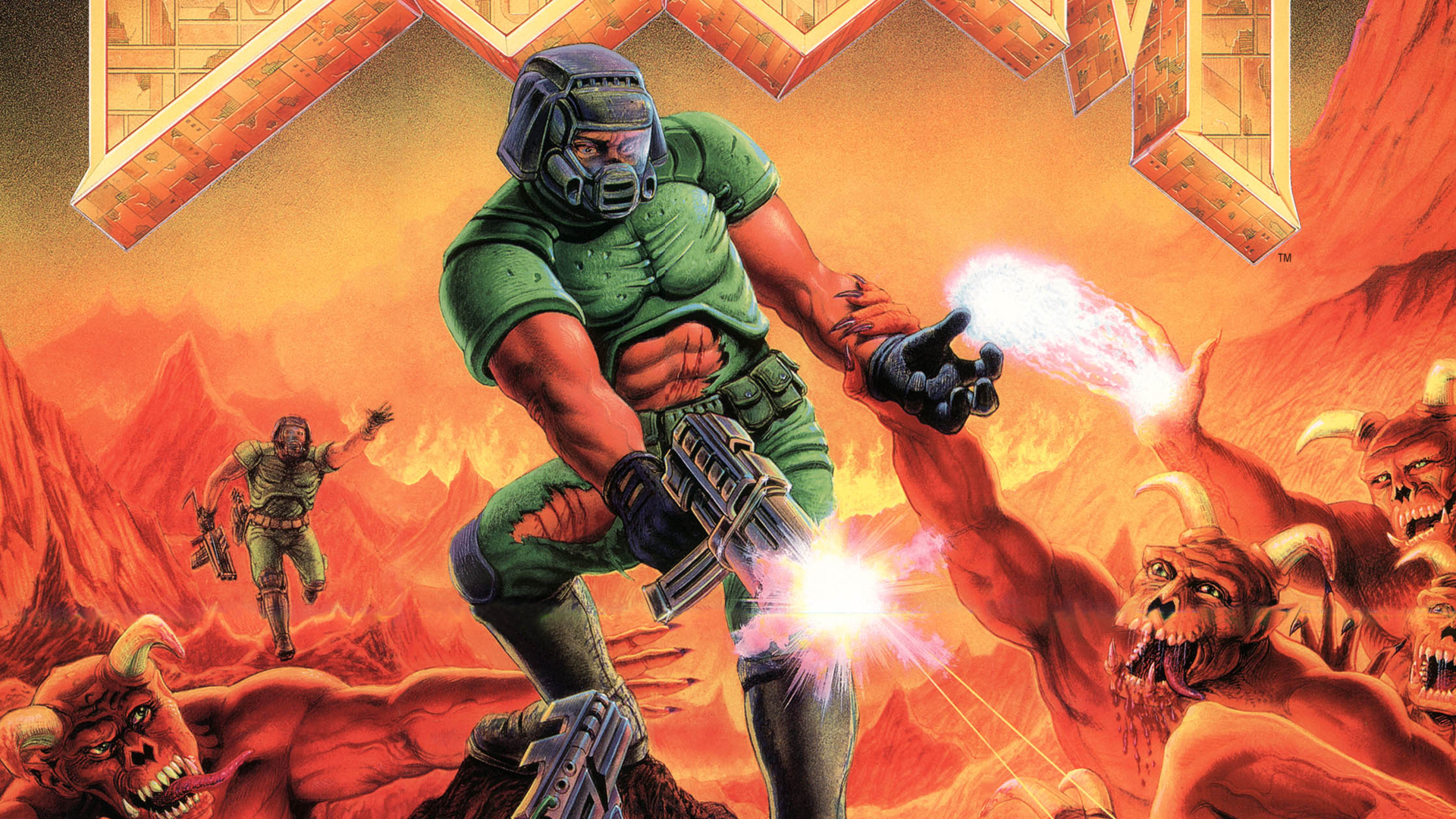
This feature originally appeared in PC Gamer UK magazine's April issue as part of a series of pieces celebrating PC gaming greats. We'll be posting more in the coming week.
In the winter of 1993, Dallas, Texas-based developer id Software released a game about a space marine killing demons, and a legend was born. Doom set the standard for the first-person shooter on PC and beyond, and was one of the first videogames to bleed into mainstream pop culture. It was critically acclaimed, technically groundbreaking, a sales success, and is still considered by a huge number of people to be one of the best games of all time.
Today, co-creator John Romero runs his own studio in Galway, Ireland. He’s currently working on Empire of Sin, a turn-based strategy game set in Prohibition-era America. This is a far cry from Doom, but the landmark shooter is never far from his mind. In 2018, Romero released SIGIL, a brand new Doom episode. And his Twitter feed is a goldmine of anecdotes, rare photos, and other Doom ephemera. But why, when so many other games from the ’90s have been forgotten, does Doom endure?
"It’s programmed really well," says Romero, speaking from his studio in Galway. "And releasing the source code has allowed ports to keep it at a highly playable level. If you play it in DOSBox, it still feels pretty good. But it’s not as smooth as it is on today’s machines. I actually think it feels better playing it with a source port nowadays. There was a tipping point a while ago where people would swear you had to play the original DOS version, but now these source ports make it feel really good."
Special edition
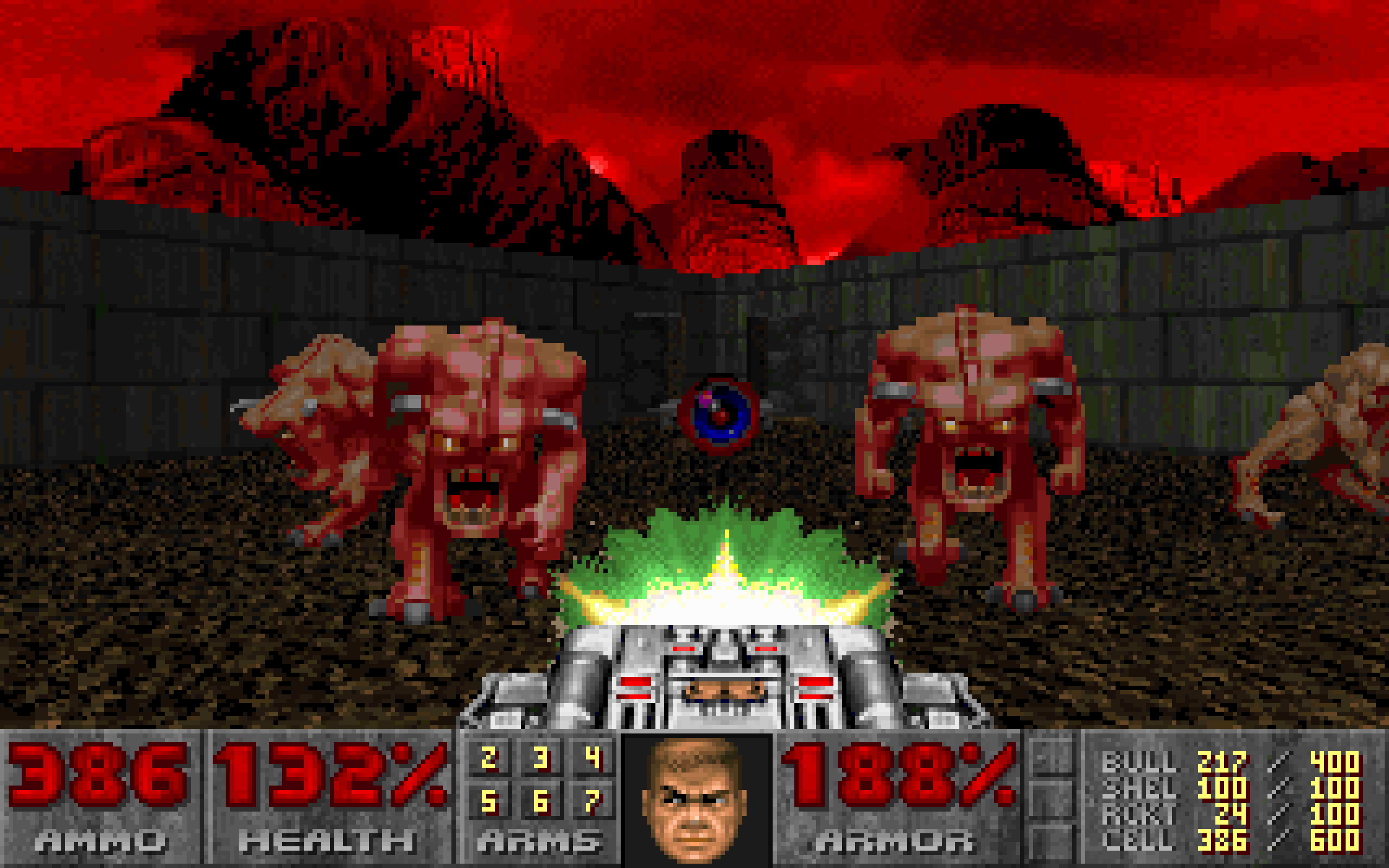
Another important part of Doom’s magic, and the reason it still feels good to play today, is how brilliantly crunchy its weapons feel to fire. "We had a limited amount of experience putting guns in a shooter when we made Wolfenstein. But with Doom, we spent a year with those weapons. We had a lot more of them, and they were not all the same kinda thing. We had energy weapons, rockets. So we spent a lot more time focused on balancing, and the speed of weapons in relation to the player’s speed, and everything else."
Doom’s fast-paced, brutal combat made it a smash hit, but Romero and the rest of the id Software team knew long before release that they were onto something special. "We knew that before we made the game," says Romero. "We planned Doom for a couple of months before we started working on it. It’s kinda unbelievable, but we even put out a press release saying it was going to be the best game in the world."
This press release, sent to the games media in 1993, says Doom will feature revolutionary programming, advanced design and faster texture- mapping than any other game—some incredibly bold claims that all turned out to be true. "It was just crazy, especially as we had just started making the game," says Romero. “But we knew, even then, that what we were going to put in the game was going to be better than anything that anyone was making at the time. So we said that. But we’ve never said anything like that again."
The biggest gaming news, reviews and hardware deals
Keep up to date with the most important stories and the best deals, as picked by the PC Gamer team.
Doom is often thought of as an overnight success, but before id Software released it, the studio had already developed dozens of games—including several relatively primitive first-person shooters. “Before we started making it, it was our fifth first-person shooter," says Romero. “We were a small company, but Doom was game 20-something.
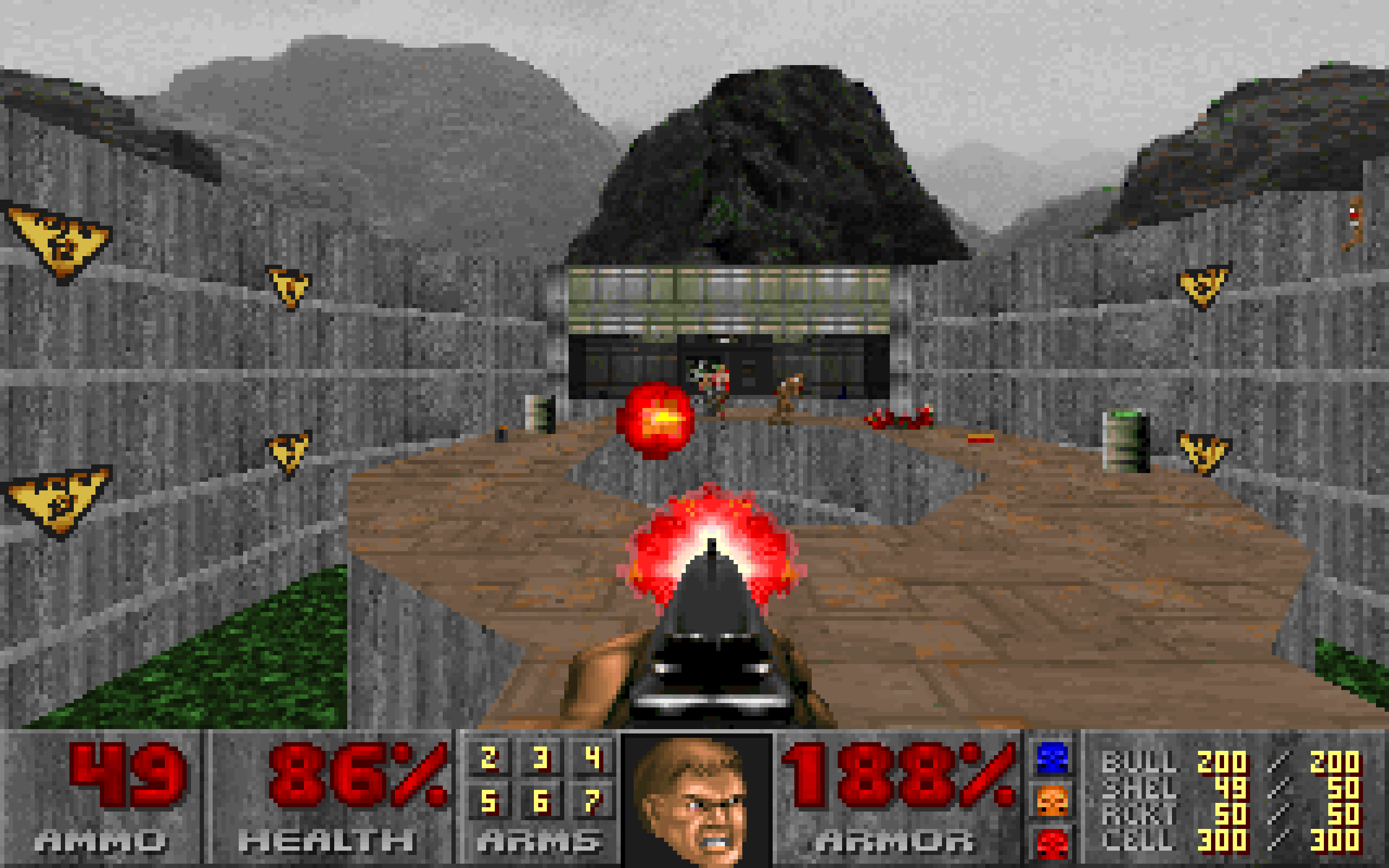
"We’d made a ton of games before Doom, and that was only in a few years. We got together in 1990, but I’d been making games since at least 1979. I had dozens of games already made. When we got together, we spent years making a lot of games together before we even started work on the Doom project. So we had a lot of practice both separately and together."
It wasn’t long until word about Doom began to spread like wildfire, and people were somehow getting a hold of id’s office number and asking when the game would be released. "I have no idea how that happened," says Romero. "People had heard about it on the internet and were going crazy waiting for it to be released. That was really cool.
"I remember the January or February issue of Computer Gaming World, which was the big magazine back then, and they had a section at the very back with new releases. They would write a couple of quick paragraphs with a screenshot.
And Doom was just in there, and it said ‘You’re a space marine and you’re killing aliens in a base’. And that was it!"
Demon days
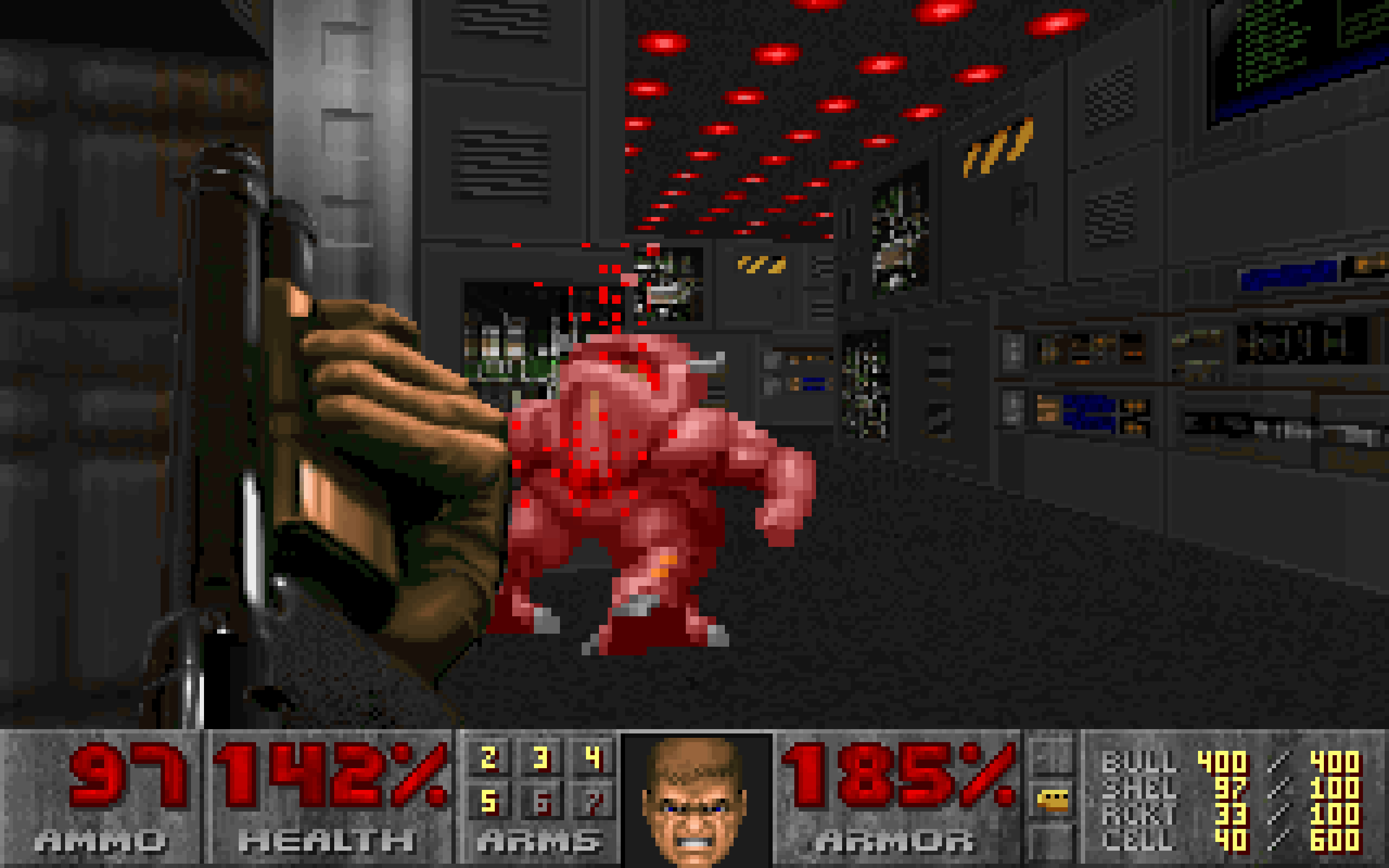
But despite an initially lukewarm response from the media, id Software knew from the number of orders it was receiving that Doom was going to be a success. "Back then Usenet was a thing, and there was a weekly top 100 games list. Doom came out and it got to the top pretty quickly, and it just stayed there. Then, at some point in early 1994 we started noticing that every gaming magazine had Doom in it, in one way or another."
Romero remembers an article in PC Gamer where writer Matt Firme talked about how Doom had taken over his life. "Doom has forever redefined our expectations of PC gaming," the article read. "If any new game hopes to win the title Game of the Year, it’ll have to beat Doom first." Romero also has fond memories and high praise of a Doom II article we published in 1994. "It had the coolest two-page spread with the title ‘UNSPEAKABLE’, with the Icon of Sin, and I loved that. That’s my favourite article on Doom ever."
Blood simple
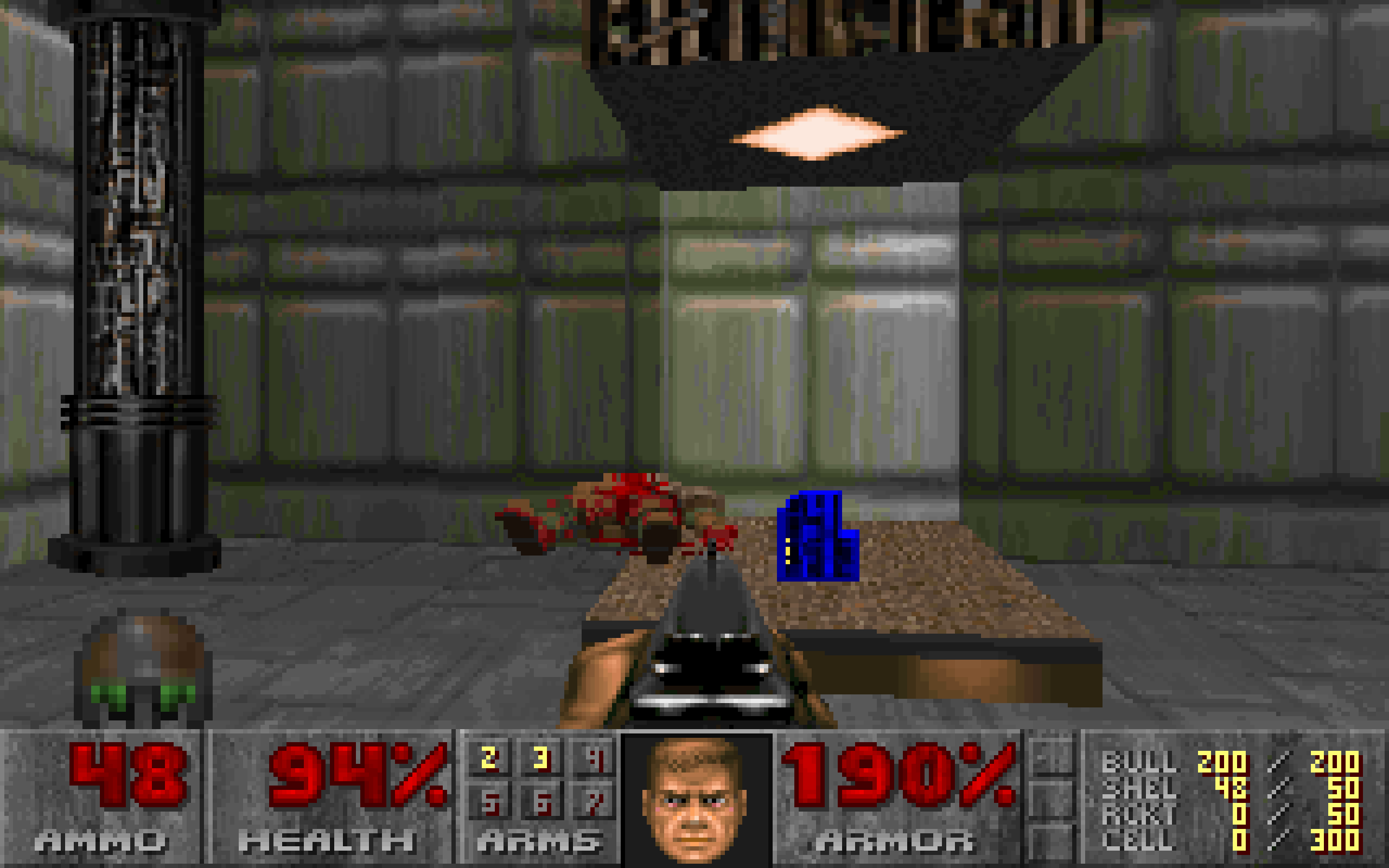
Doom’s ‘controversial’ violence was another string to its bow, with tabloid hand-wringing only adding to the game’s popularity. The more people who said kids shouldn’t play it, the more kids played it. Taking advantage of this controversy, publisher GT Interactive had some, uh, interesting marketing ideas. "They sent packages of guts to reviewers,” says Romero. “And they’d have to dig through it to get the floppy disk."
For Romero, this sudden surge in popularity was exciting, but not completely new. "The whole ride was pretty natural," he says. "During the 1980s I had seen personal success in programming that no one else knew about, except maybe my parents. But I was learning stuff, making games, selling games. They were going into stores and I was getting covers of magazines. I was doing all of this stuff while I was in high school.”
Romero had even worked for the US Air Force. "I knew how to code so they had me in a vault programming top secret stuff. Because I was working hard on programming, a lot of cool stuff happened. Then I got my first job at Origin Systems, which to me was the ultimate. I was like ‘I’m done. I’m now working at the best company I ever wanted to work at.'"
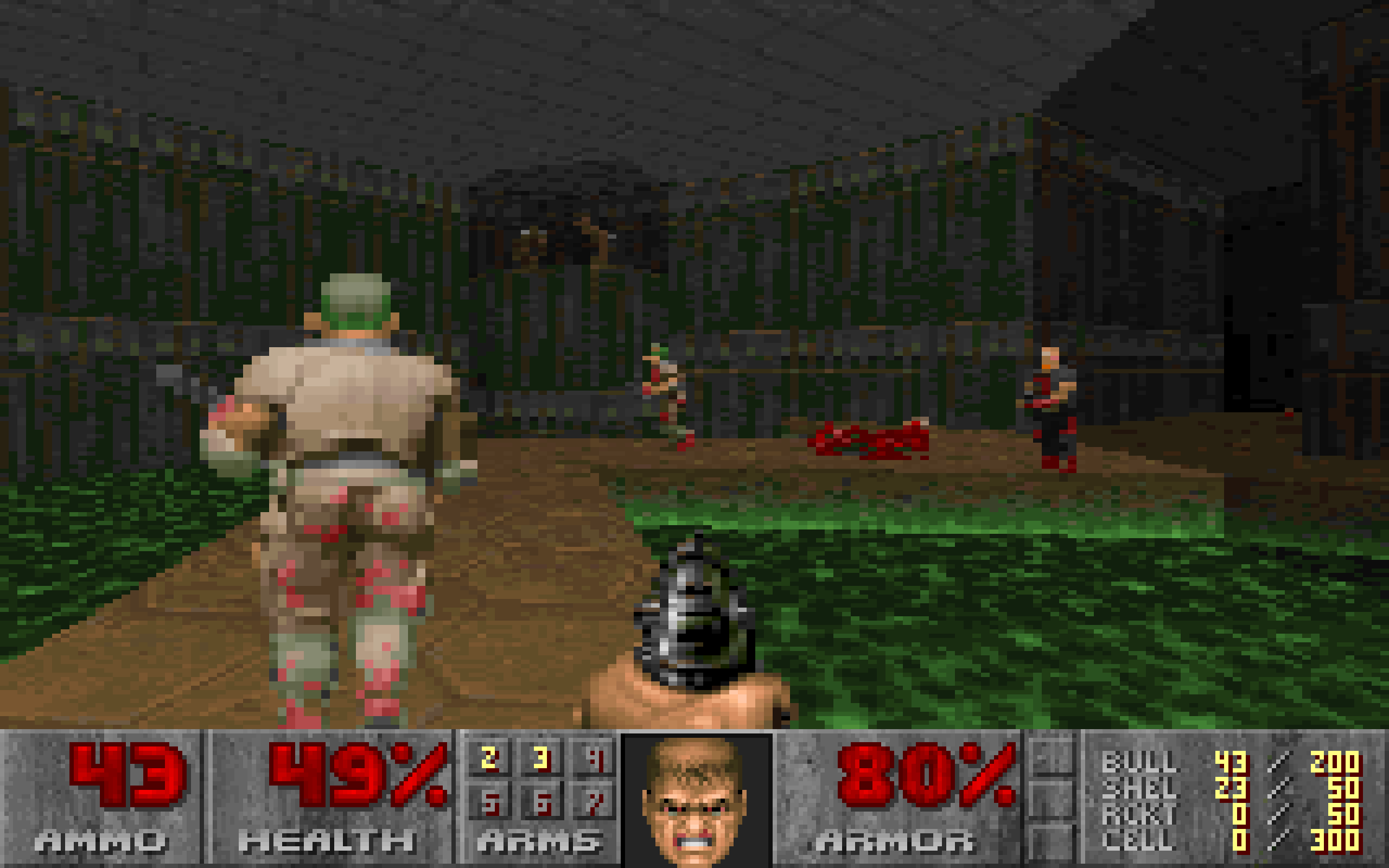
Romero and id Software had also had some interest from the press before, with earlier games like Commander Keen and Wolfenstein. "There were a lot of amazing reviews in magazines and on the internet about how Commander Keen was changing the PC, making it a Nintendo contender. Then with Wolfenstein, we got our first radio interview and TV stations came over to do stories. We went to Disney World and people recognised us. So it was like ‘Wow, OK, this is the beginning of something. We’re doing some cool stuff’. And then Doom was the next level, basically."
Doom was created in a time when 3D games were still fairly basic, but for Romero and the others on the team, the hardware limitations of the day were something to be conquered and not to be beaten by. "We were trying to break away from those constraints, and that’s why Doom was better than other games," he says. "640k was the memory limitation for most games back then, but Doom was the first we made that went over the 1MB boundary."
OS and them
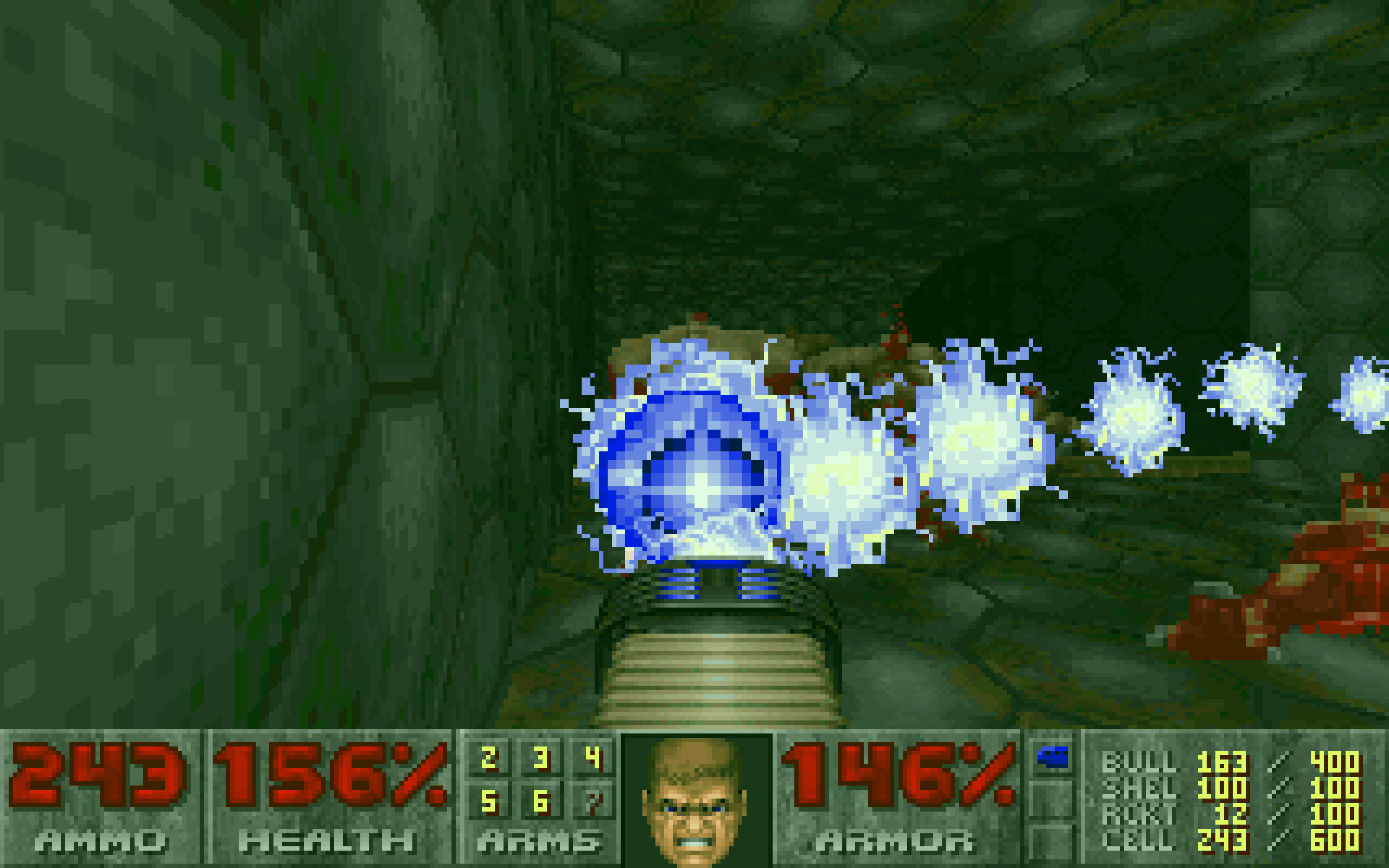
Doom’s technical advances were also made possible by the switch from DOS computers to advanced NeXTSTEP workstations. "We developed Doom on a superior operating system, which allowed us to do more," says Romero. "We developed it on a NeXTSTEP system, which is today’s OSX.
"We actually started using this OS back in 1992 during the development of Wolfenstein, but to lay out books and stuff like that. Then when we started working on Doom we got NeXTSTEP workstations for everyone and it was like night and day. It felt like DOS machines were little toy computers in comparison. They had 1024x768 16-bit graphics. The programming toolkit was unbelievable. So we had worked hard to break out of the box that DOS game developers were normally restricted to."
Doom’s complex, abstract, secret-filled level designs are often held up as an example of how modern games have dumbed down. I ask Romero why he thinks this kind of design has fallen out of favour. “Most first-person shooters try to replicate the real world now, and that was kinda where graphics were going the entire time since Doom," he says. “People were even modding Doom to try and make it look more realistic.
"Marine Doom was used by the military to get soldiers used to fast reflexes and reactions. That was replacing the graphics with scanned-in normal humans instead of pixel art monsters. The trajectory of graphics has always been realism, so why wouldn’t you make the environments realistic too? And the artistic design of abstract levels is contrary to that.
"Doom’s puzzles made sense in that kind of space, but that’s harder to do in a realistic setting. However, I think Half-Life 2 did an amazing job of putting really interesting puzzles in an FPS through physics and stuff. They did a great job of moving the design language forward."
Level up
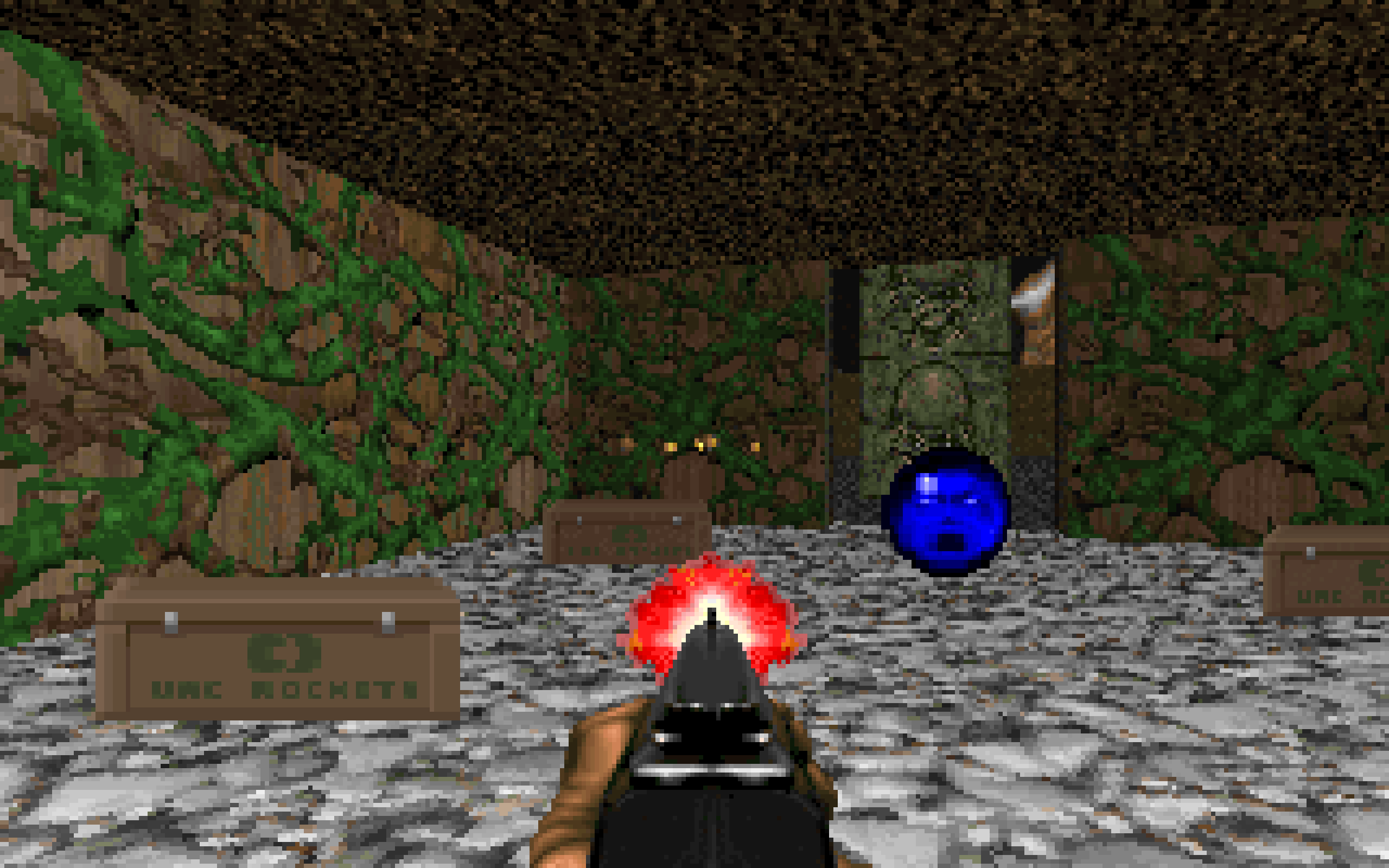
But creating these levels was hard work—doubly so because no one had made game worlds with this level of intricacy before, especially in three dimensions. "One of the biggest hurdles in developing Doom was the environments," says Romero. “Just before Wolfenstein we made Catacomb 3D and that was our first texture-mapped 3D game. Those environments were like dungeons. Just running through tunnels killing stuff. Wolfenstein had VGA graphics and it looked better, but it was still a maze game. And before Doom, every three-dimensional game was basically a maze game. Going back to 1974, everything that was 3D was a maze. If you played Ultima, Wizardry, or Might & Magic, or any game that had a 3D environment in it, you were always in a 90 degree walled maze.
"So we didn’t have any example of how to do something different, and it was a lot of work trying to break out of that. Even the early Doom levels we made as examples when I was programming the Doom editor were still very Wolfenstein-looking, and they weren’t fun to play in. They were basically boring. So I decided one day to solve the problem."
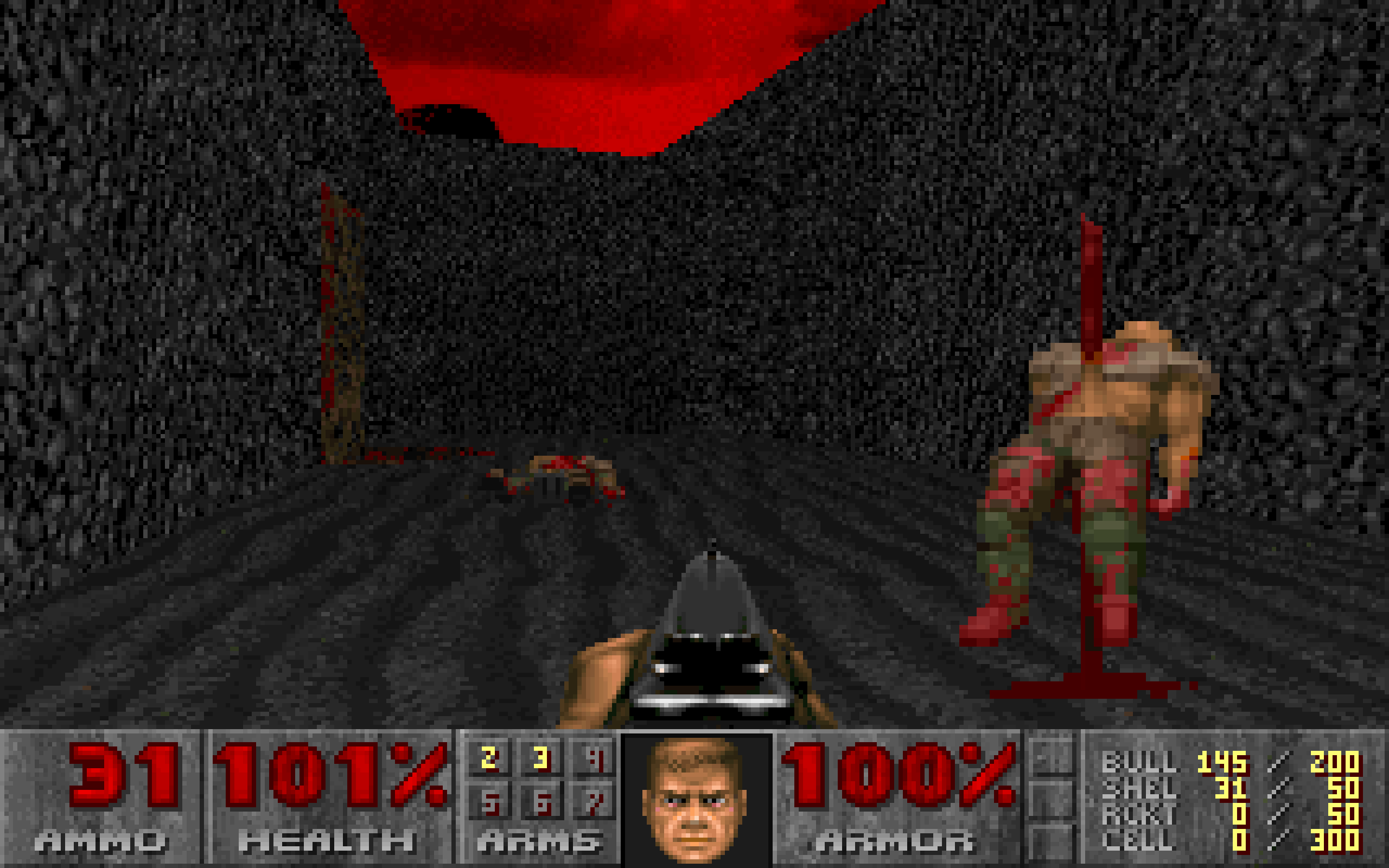
Romero spent a few hours experimenting and came up with a few sample environments that were far more interesting than the samey mazes of Wolfenstein. "The other guys saw it and they were like ‘Wow, this is it. This is the style we need to go for’. And so we went full-on abstract, not worrying about making things look realistic.
"We could make objects in the world look realistic, like crates and stuff, but the actual layout and architecture of the levels needed to be fun to play in, look cool, and not adhere to any kind of realism. They just needed to be really fun, and that was the beginning of Doom’s abstract style of level design, which basically all ’90s games went on to use.
"Darkness was a really big factor in making the game feel suspenseful and tense," explains Romero. "In E1M3 when you go to get the keycard, it’s the first time that the lights are turned out on you. People never forget the first time they saw that. You grab the blue keycard, the lights go out, and you just hear hissing. You turn and you see the silhouettes of about five Imps coming at you in a dark room and you have to find the way out."
Cracking the code
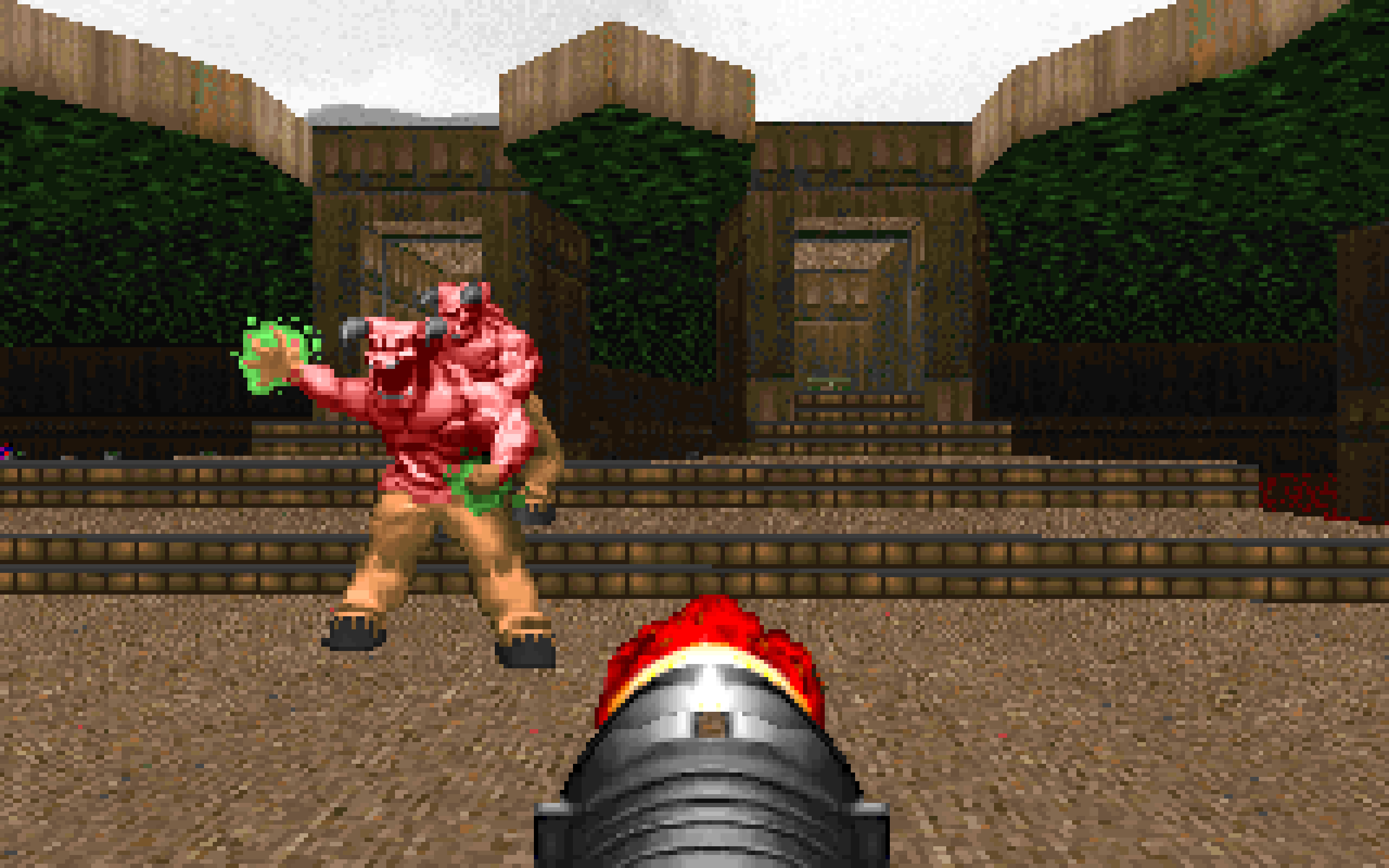
But Doom’s engine unfortunately had no built-in support for doing tricks like this. If Romero had an idea for something cool, he couldn’t just quickly rig it up—he had to go in and code it himself. "When you see lights flickering, doors opening, lifts going up and down, taking damage from slime... any gameplay thing happening in a level, I did all the programming for it, which came from what I felt like I needed to have in the game at that time.
"So if I’m like ‘Oh, I need to have the floor rise out of the slime, and I need the floor to turn into a normal floor when it rises. What are the rules for that happening?’. Then I had to go into the editor and code that trigger and what that trigger does. Then I needed to go into the game code and program it so it would actually do that. Then I had to go back into the editor and put it into the level to see if it would work the way that it should. And I had to do that with every single special thing in the game.

"Doom was designed as we were making it. There wasn’t a big list of all the things we needed. It was like ‘I’m making a level and it would be cool to have a flickering light here’, and that’s it. Start programming it. And everyone who has been making Doom levels since has been using stuff I came up with in five minutes for that one thing. These features didn’t take long to implement, really, but they’ve lasted for decades."
And that’s the core of what makes Doom a genuine masterpiece. It was created by a group of supremely talented, passionate people who were obsessively pushing the technology of the time to its limits—and doing so because they wanted to make something great. Everything else aside, it’s just a really well-made game, and will likely endure for another three decades.
As for John Romero, he’s still a part of the games industry, still making games, and still keeping Doom alive with projects like his SIGIL expansion. A lot of games burn bright then quickly fade away, but Doom is eternal.
If it’s set in space, Andy will probably write about it. He loves sci-fi, adventure games, taking screenshots, Twin Peaks, weird sims, Alien: Isolation, and anything with a good story.


